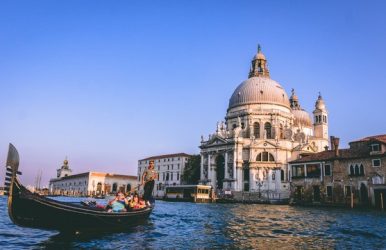Top 5 Romantic European City Breaks
BY Ariana SmithOct 21, 2021
There are few parts of the world as diverse as Europe. From the waterways of Venice to the 100 spires of Prague, there are so many places for you and your other half to explore. There are couples city breaks ideal for every couple; including the party couples and the history buff couples. That being said, there are five cities that we think are particularly worth a visit for romantic couples, so if you and your significant other are looking for an amorous break in Europe, keep reading. Here Are The Top 5 Romantic European City Breaks: 1. Verona: When it comes to romantic couples, Romeo and Juliet take the top spot, and naturally, that makes the city of fair Verona a romantic must-see, but there’s more to it than just that balcony. There are countless lover’s lanes, an abundance of piazza’s, plenty of architectural bridges, and, the star of the show, the amphitheater. There’s so much to see and do away from the huge crowds at Juliet’s balcony, including plenty of independent cafés dotting the many piazza’s, lots of which supply the regional wine. 2. Paris: This wouldn’t be a list of romantic European city breaks without featuring Paris. The city of love certainly lives up to its reputation, but it’s not all just about the Eiffel Tower. A huge part of the romance comes from the beautiful architecture which is limited to just six stories. This means the views of the Eiffel Tower are never obscured, but also that you’re never overshadowed by a huge skyscraper, adding to the comforting sunrise and sunset glows. Away from the architecture, Parisians are known for being very flirtatious and passionate lovers, and this is exuded in the way they conduct themselves. This could be why when in Paris, you can’t help but fall even more in love with your partner. 3. London: The River Thames at night is a sight to behold, especially when you consider it was the backdrop to a Bridget Jones’s Diary scene. London is slightly different from other cities in Europe in the sense that it’s not traditionally associated with romance, but there’s something about the variety of things to do in London that makes it a lover’s paradise. Whether it’s a trip to the West End for the theatre-loving couple, or if it’s a Jack the Ripper tour for the true-crime fanatics, London has something for everyone. 4. Krakow: Christmas is a magical time of the year, especially for those who are lucky enough to be in love, so what better time to cement your devotion to each other than with a trip to the cozy Christmas markets of Krakow? You’ll need to wrap up warm and stick together to preserve heat as the temperature drops, but what could be more poignant than sharing a cup of mulled wine whilst huddling against the person you love the most at the best time of the year? 5. Stockholm: The jewel in the Baltic Sea archipelago, Stockholm is one of the most stunning locations in the world. The 14 islands are connected via over 50 bridges, each one leading to a different activity that you can enjoy with your love. Whether your partner is an ABBA superfan or a 17th-century ship enthusiast, there’s an activity to bring every couple closer together. If you visit during a particularly clear time of the year, you might even be able to share a kiss under the northern lights provided the conditions are just right! These are just five of the most romantic city breaks in Europe, but there are many more places of interest waiting to be discovered. Frequently Asked Questions (FAQs) Where should couples go in Europe? The top 4 places that a couple can visit for a romantic vacation are Venice- Italy Paris- France Sintra- Portugal Santorini- Greece Which is the most romantic place in Europe? Dubrovnik- Croatia, ideal for island hopping. Madrid- Spain, ideal for rooftop drinking Viena- Austria, ideal for a wintery break Dublin- Ireland, ideal for revelry What is the cheapest city break in Europe? Sofia- Bulgaria Funchal- Portugal Riga- Latvia Bucharest- Romania Read Also: 5 European Destinations Negatively Impacted By ‘Over-Tourism 5 Backpacking Tips For An Unforgettable Euro-Trip Unmissable Attractions In Surabaya Pripyat Visit Or The Soviet Union Through Our Eyes










 Latest
Latest






